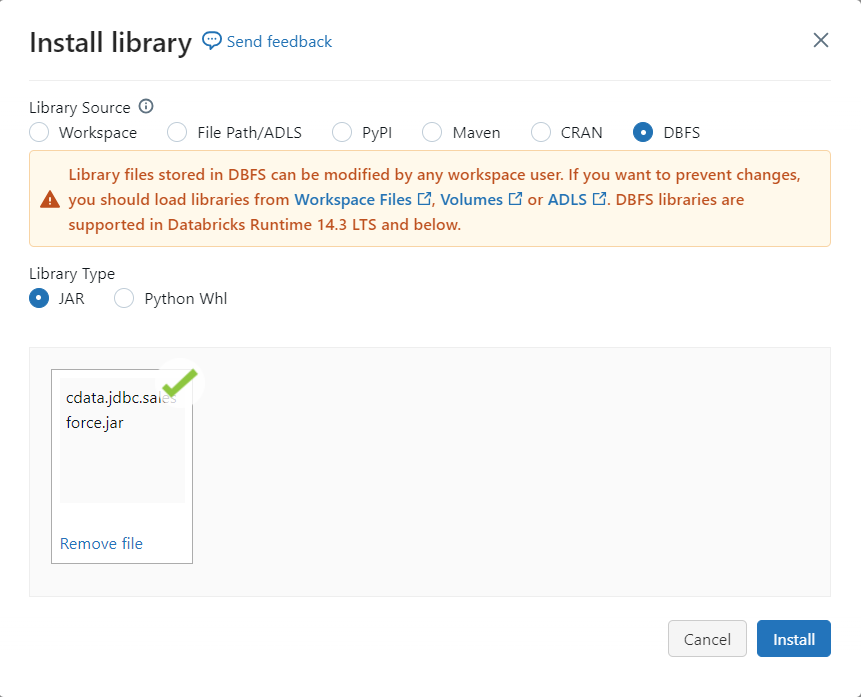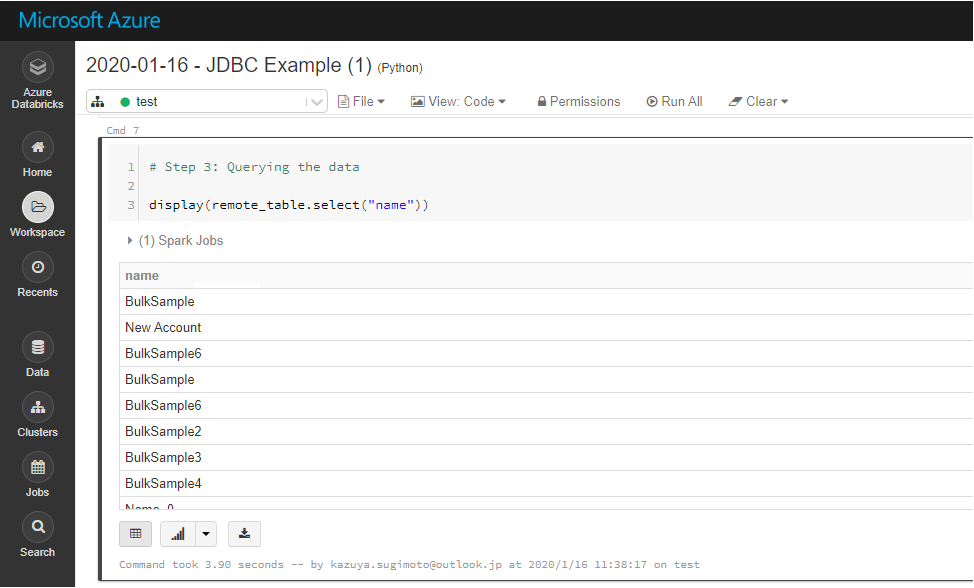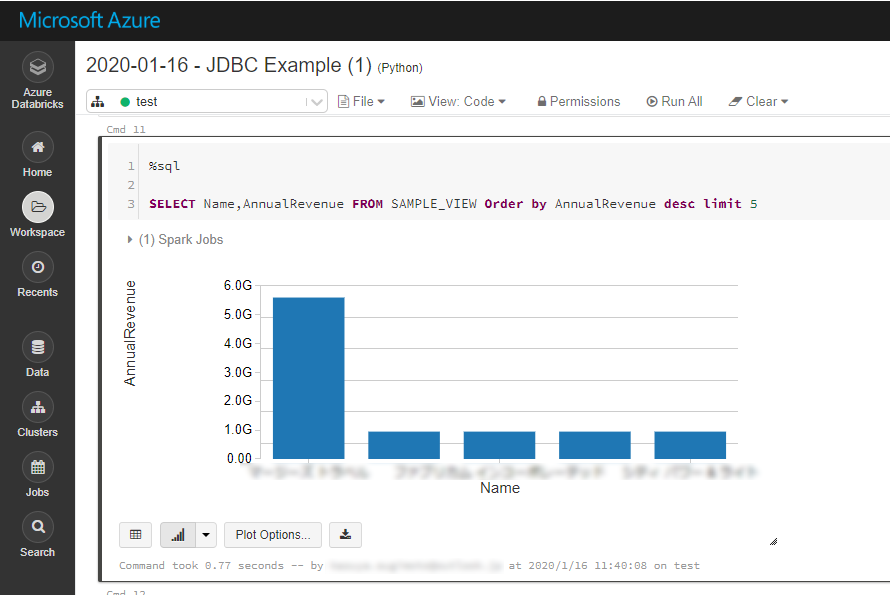Discover how a bimodal integration strategy can address the major data management challenges facing your organization today.
Get the Report →How to connect and process SAP Data from Azure Databricks
Use CData, Azure, and Databricks to perform data engineering and data science on live SAP Data
Databricks is a cloud-based service that provides data processing capabilities through Apache Spark. When paired with the CData JDBC Driver, customers can use Databricks to perform data engineering and data science on live SAP data. This article walks through hosting the CData JDBC Driver in Azure, as well as connecting to and processing live SAP data in Databricks.
With built-in optimized data processing, the CData JDBC driver offers unmatched performance for interacting with live SAP data. When you issue complex SQL queries to SAP, the driver pushes supported SQL operations, like filters and aggregations, directly to SAP and utilizes the embedded SQL engine to process unsupported operations client-side (often SQL functions and JOIN operations). Its built-in dynamic metadata querying allows you to work with and analyze SAP data using native data types.
About SAP Data Integration
CData provides the easiest way to access and integrate live data from SAP. Customers use CData connectivity to:
- Access every edition of SAP, including SAP R/3, SAP NetWeaver, SAP ERP / ECC 6.0, and SAP S/4 HANA on premises data that is exposed by the RFC.
- Perform actions like sending IDoc or IDoc XML files to the server and creating schemas for functions or queries through SQL stored procedures.
-
Connect optimally depending on where a customer's SAP instance is hosted.
- Customers using SAP S/4HANA cloud public edition will use SAP NetWeaver Gateway connectivity
- Customers using SAP S/4HANA private edition will use either SAP ERP or SAP NetWeaver Gateway connectivity.
While most users leverage our tools to replicate SAP data to databases or data warehouses, many also integrate live SAP data with analytics tools such as Tableau, Power BI, and Excel.
Getting Started
Install the CData JDBC Driver in Azure
To work with live SAP data in Databricks, install the driver on your Azure cluster.
- Navigate to your Databricks administration screen and select the target cluster.
- On the Libraries tab, click "Install New."
- Select "Upload" as the Library Source and "Jar" as the Library Type.
- Upload the JDBC JAR file (cdata.jdbc.saperp.jar) from the installation location (typically C:\Program Files\CData[product_name]\lib).

Connect to SAP from Databricks
With the JAR file installed, we are ready to work with live SAP data in Databricks. Start by creating a new notebook in your workspace. Name the notebook, select Python as the language (though Scala is available as well), and choose the cluster where you installed the JDBC driver. When the notebook launches, we can configure the connection, query SAP, and create a basic report.
Configure the Connection to SAP
Connect to SAP by referencing the class for the JDBC Driver and constructing a connection string to use in the JDBC URL. Additionally, you will need to set the RTK property in the JDBC URL (unless you are using a Beta driver). You can view the licensing file included in the installation for information on how to set this property.
driver = "cdata.jdbc.saperp.SAPERPDriver" url = "jdbc:saperp:RTK=5246...;Host=sap.mydomain.com;User=EXT90033;Password=xxx;Client=800;System Number=09;ConnectionType=Classic;Location=C:/mysapschemafolder;"
Built-in Connection String Designer
For assistance in constructing the JDBC URL, use the connection string designer built into the SAP JDBC Driver. Either double-click the JAR file or execute the jar file from the command-line.
java -jar cdata.jdbc.saperp.jar
Fill in the connection properties and copy the connection string to the clipboard.
The driver supports connecting to an SAP system using the SAP Java Connector (SAP JCo). Install the files (sapjco3.jar and sapjco3.dll) to the appropriate directory for the hosting application or platform. See the "Getting Started" chapter in the help documentation for information on using the SAP JCo files.
In addition, you can connect to an SAP system using Web services (SOAP). To use Web services, you must enable SOAP access to your SAP system and set the Client, RFCUrl, User, and Password properties, under the Authentication section.
For more information, see this guide on obtaining the connection properties needed to connect to any SAP system.

Load SAP Data
Once the connection is configured, you can load SAP data as a dataframe using the CData JDBC Driver and the connection information.
remote_table = spark.read.format ( "jdbc" ) \ .option ( "driver" , driver) \ .option ( "url" , url) \ .option ( "dbtable" , "MARA") \ .load ()
Display SAP Data
Check the loaded SAP data by calling the display function.
display (remote_table.select ("MANDT"))

Analyze SAP Data in Azure Databricks
If you want to process data with Databricks SparkSQL, register the loaded data as a Temp View.
remote_table.createOrReplaceTempView ( "SAMPLE_VIEW" )
The SparkSQL below retrieves the SAP data for analysis.
% sql SELECT MANDT, MBRSH FROM MARA
The data from SAP is only available in the target notebook. If you want to use it with other users, save it as a table.
remote_table.write.format ( "parquet" ) .saveAsTable ( "SAMPLE_TABLE" )

Download a free, 30-day trial of the CData JDBC Driver for SAP ERP and start working with your live SAP data in Azure Databricks. Reach out to our Support Team if you have any questions.





